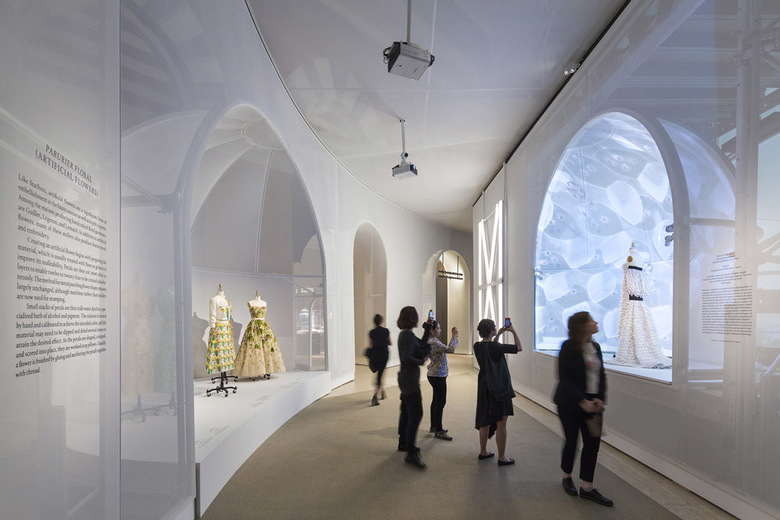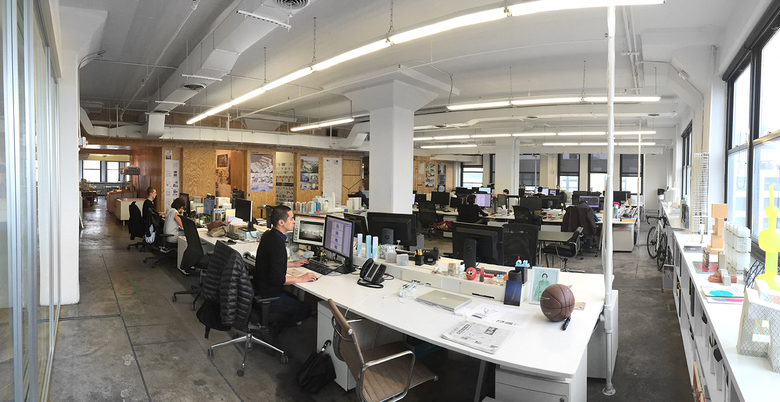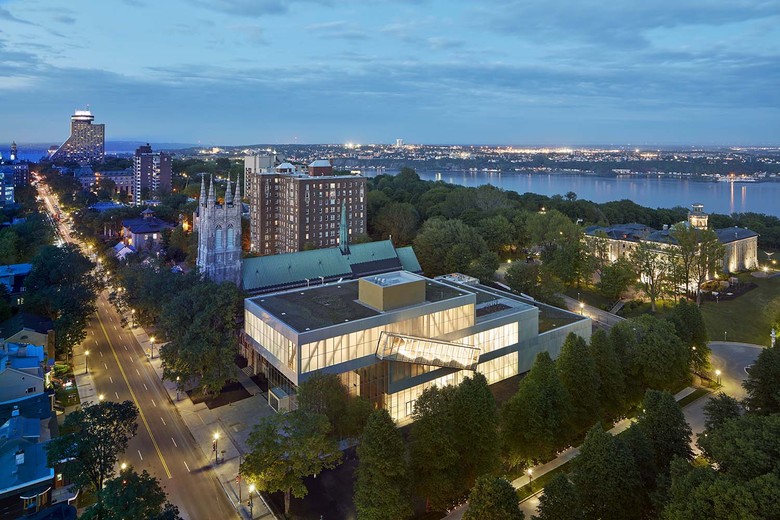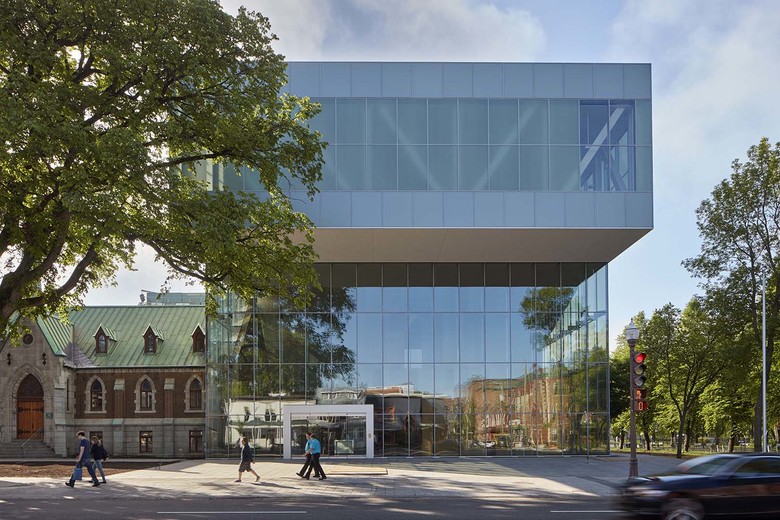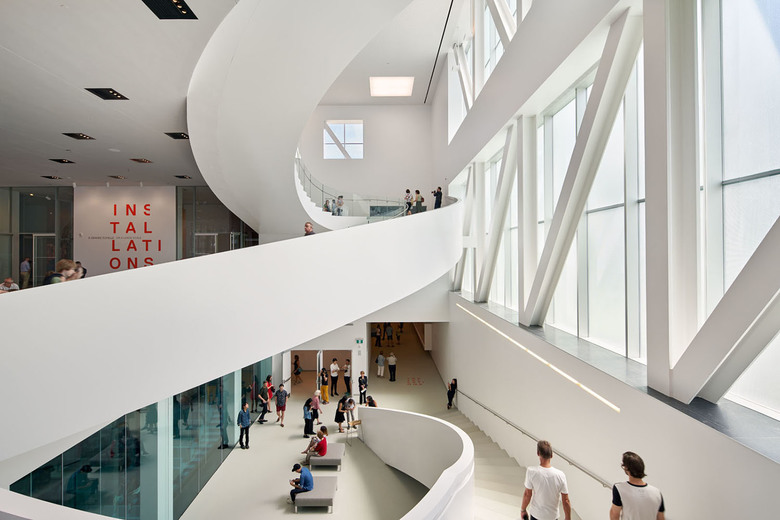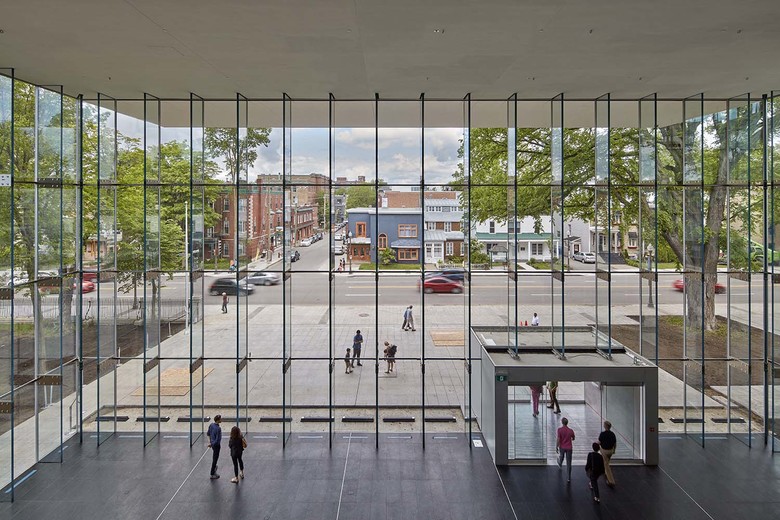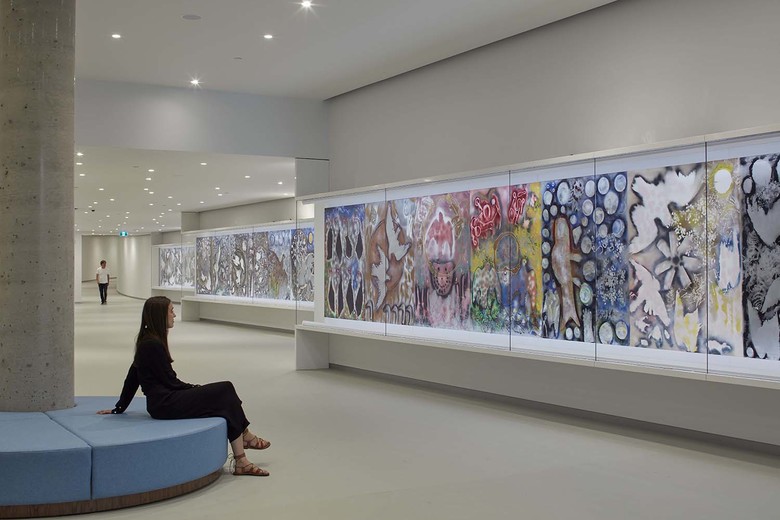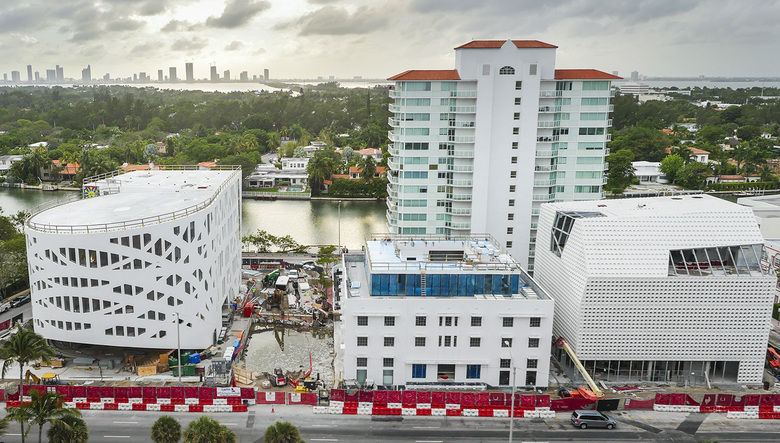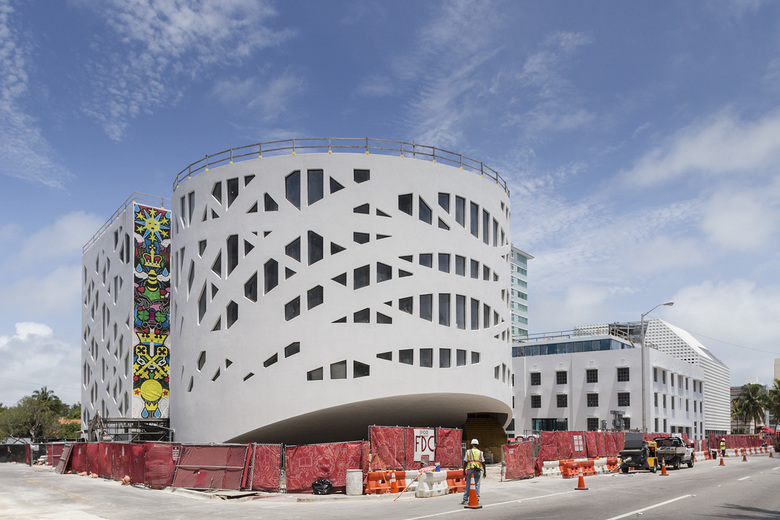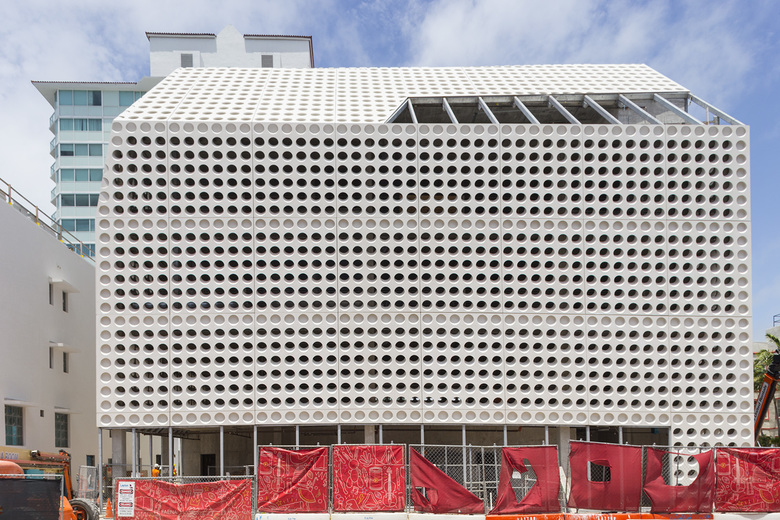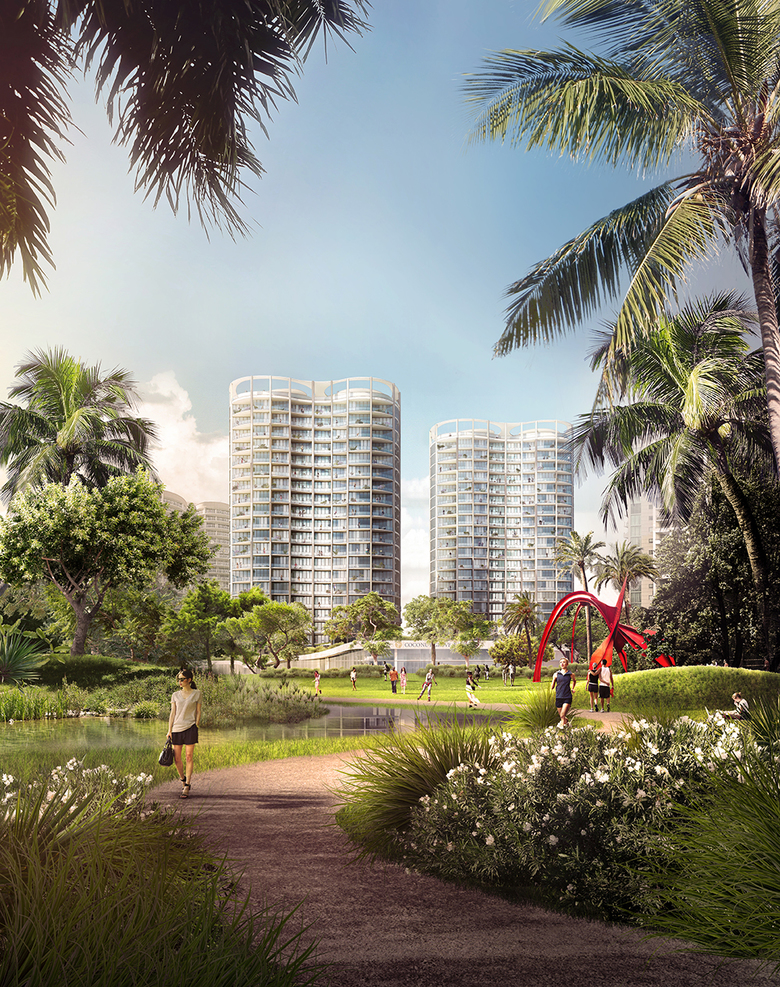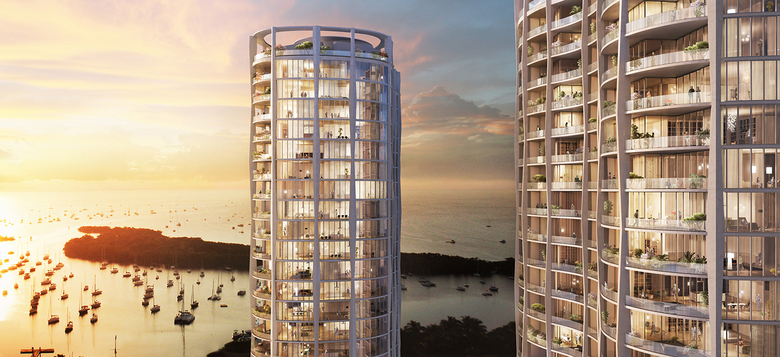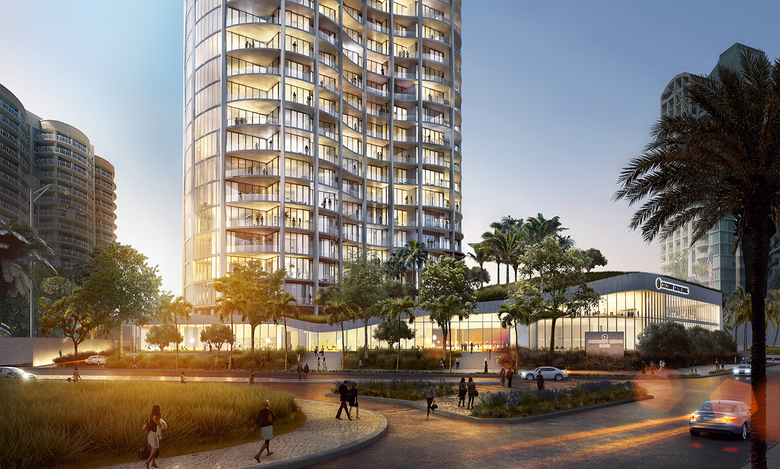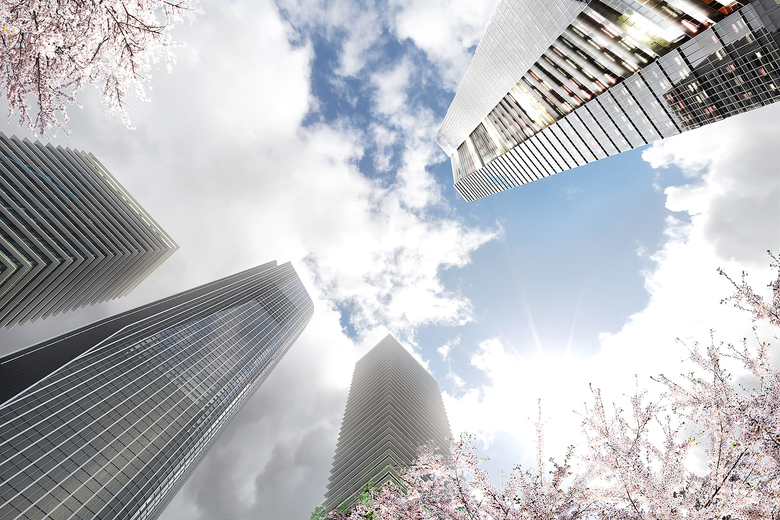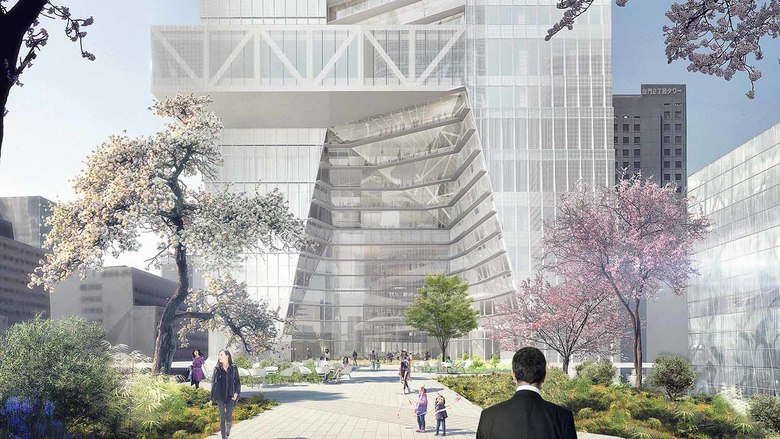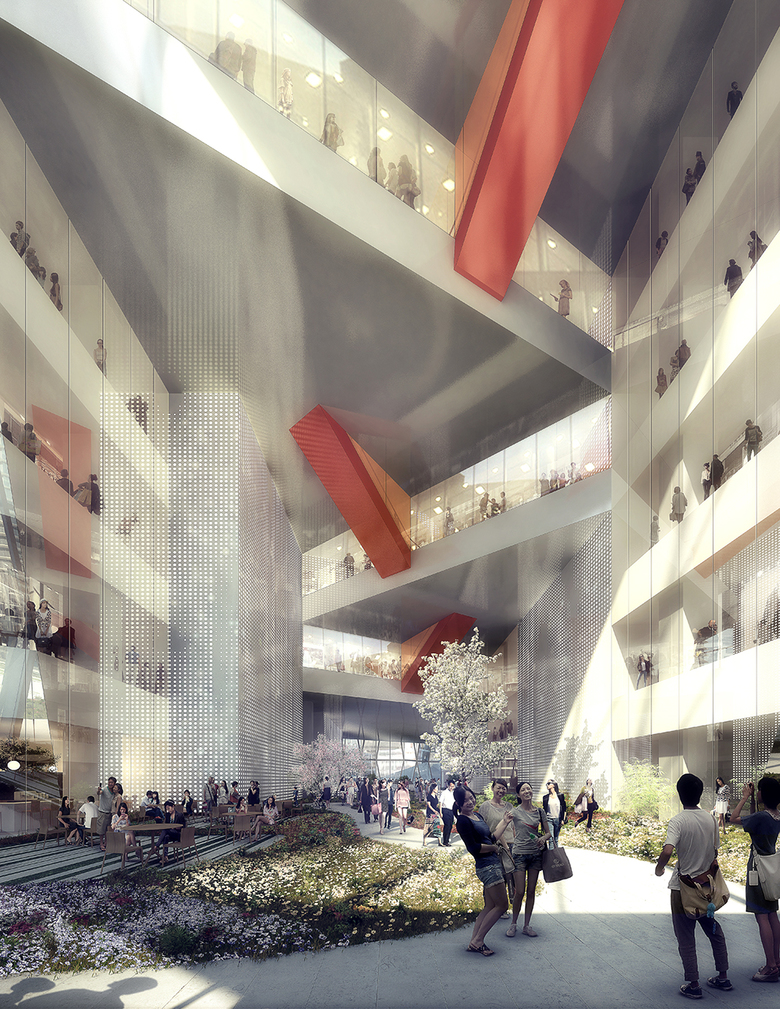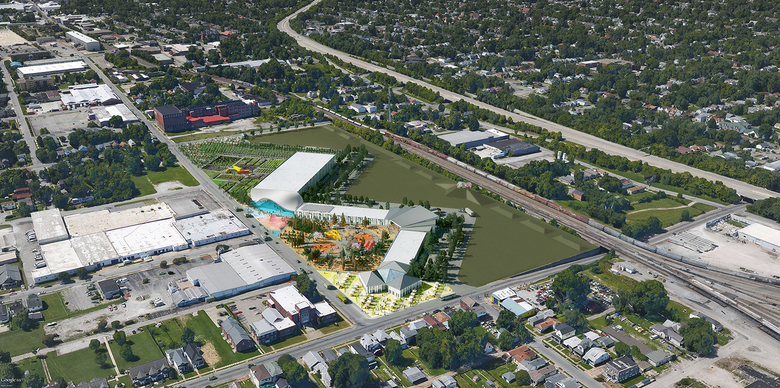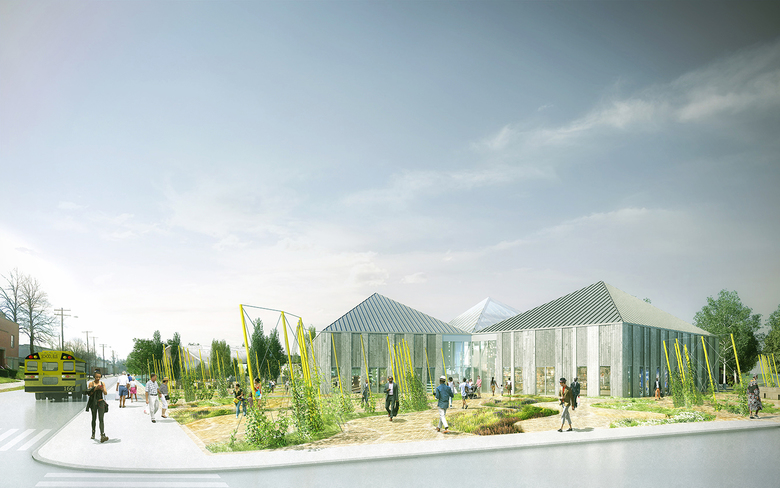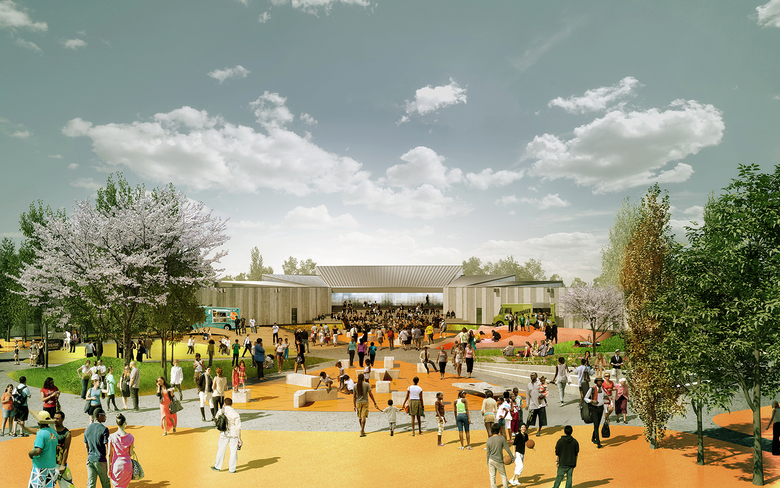Studio (Re)Visit: OMA NY
John Hill
24. juni 2016
"Manus x Machina" Exhibition, The Metropolitan Museum of Art, New York (Photo: Albert Vecerka/Esto)
Three years after a 2013 visit to the Office for Metropolitan Architecture's (OMA) New York office to speak with partner Shohei Shigematsu, World-Architects editor John Hill returned to 180 Varick Street to learn about some new projects and hear about a few nearing completion.
My recent studio visit coincided with OMA's completion of the Manus x Machina exhibition for the Costume Institute at the Metropolitan Museum of Art, which opened to the public on May 5th (it runs until August 14th). The project's relatively small size and focus on fashion recall a couple projects that Shigematsu and OMA New York completed around the time of my first studio visit: the Coach kiosk in Macy's Herald Square store and the Raleigh Durham boutique in Nolita. Even though Manus x Machina is a temporary installation, it is a highly prestigious one that signals OMA New York has rebounded very well from the economic crisis that affected them and just about every other architecture firm in the city after 2008.
OMA's office at 180 Varick Street in New York (Photo: Courtesy of OMA)
The first sign of better days for the OMA New York studio was evident after taking just a few steps into the office: the space recently doubled from its 2013 size. The original loft-like space, photo above, in the famous building at 180 Varick Street (famous for being home to at least a dozen architecture firms) has expanded to the west to accommodate around 50 employees. This new space, photo below, carries through the service core's plywood walls, which enamored me so much during the first visit. The expanded office space comes about from an improved economy and the accompanying new and bigger projects. Below are a handful of projects culled from my conversation with Shohei Shigematsu, projects that are either opening, nearing completion, or in progress.
OMA's office at 180 Varick Street in New York (Photo: Courtesy of OMA)
Musée national des beaux-arts du Québec | MNBAQ
Pierre Lassonde Pavilion, MNBAQ (Photo: Bruce Damonte)
Today, June 24th, marks the inauguration of the Pierre Lassonde Pavilion at MNBAQ (Musée national des beaux-arts du Québec) in Québec City. This milestone comes six years after OMA New York won the international competition with a stepped design that cantilevers toward Grand Allée on the northwest and extends the green space of the National Battlefields Park over its roofs on the southeast. The building abuts and forms a courtyard with the Presbytere St-Dominique church, while underground it connects directly with the three older MNBAQ buildings.
Pierre Lassonde Pavilion, MNBAQ (Photo: Bruce Damonte)
Pierre Lassonde Pavilion, MNBAQ (Photo: Bruce Damonte)
The interiors feature abundant daylighting, thanks to all-glass exterior walls, and grand spaces, what Shigematsu attributed to the museum's need to raise half of its revenue. Therefore spaces like the generous lobby facing Grand Allée double as event spaces for fundraising, weddings and other events. Yet a number of the interior maneuvers also relate to specific pieces of art on display. The Riopelle Passageway, for instance, displays Jean-Paul Riopelle's L’Hommage à Rosa Luxemburg, a huge 40-meter-long triptych that has not been seen in its entirety until today's inauguration of OMA's new building.
Lobby, Pierre Lassonde Pavilion, MNBAQ (Photo: Bruce Damonte)
Riopelle Passageway, Pierre Lassonde Pavilion, MNBAQ (Photo: Bruce Damonte)
Faena Arts District
Nearing completion in Miami Beach, Florida, is the three-building Faena Arts District. Sited at a pinch point on the island between the Atlantic and Inidan Creek, the design takes its cues from the surrounding buildings, in particular the Art Deco architecture the area is known for. This influence is most overtly found in the cylindrical volume – the Faena Forum – that anchors the project's southeast corner and faces the Norman Foster-designed Faena House across the street with its curved balconies also inspired by the area's architecture. Inside the Forum's cylinder are flexible performance spaces that can open up to the attached cubic volume situated to the west. Wrapping the exterior are curved lines that follow the catenary cables needed to support the generous cantilever above the ground-floor entry canopy and lobby "pit."
Faena Arts District, Miami (Photo: Brett Beyer)
The other two buildings in the Faena Arts District consist of the Faena Bazaar, a renovation of the historic Atlantic Beach Hotel that was designed in 1939 by prominent local architect Roy France, and the Faena Car Park, a mechanical parking garage located at the block's northeast corner. The hotel salvages the facade and lobby but has been gutted to include a courtyard as well as some high-end retail that will accompany the new hotel rooms when it is complete. The garage will house more than 200 cars behind a perforated precast concrete facade that gives way to glass on the north facade to put the car elevators on display. The Faena Arts District, set to open in October of this year, is a project of Argentinian real estate developer Alan Faena with Russian billionaire Len Blavatnik.
Faena Arts District, Miami (Photo: Brett Beyer)
Faena Arts District, Miami (Photo: Brett Beyer)
Park Grove
Park Grove, Coconut Grove (Visualization: Bloom © OMA)
Not far from the Faena Arts District is Park Grove, a residential complex for developers Terra Group and Related Group in Miami's Coconut Grove neighborhood. Defined as two slabs in Coconut Grove's masterplan for the waterfront area, Shigematsu and his OMA New York team experimented with more towers so the project would not appear so massive. What at one point was six towers became three towers in the end, through what Shigematsu called "reverse mitosis": two of the three towers are bundled towers that resemble the islands of Christo and Jeanne-Claude's famous Surrounded Islands, which were installed in Biscayne Bay back in 1983. Park Grove, which also consists of office space, parking and a park, is under construction with a targeted completion date of 2018.
Park Grove, Coconut Grove (Visualization: Bloom © OMA)
Park Grove, Coconut Grove (Visualization: Bloom © OMA)
Toranomon Hills Station Tower
Mori Building, Tokyo (Visualization: OMA)
At time of the 2013 studio visit, constrution was nearing completion on a building for Coach on Tokyo's Omotasando, a thoroughfare famous for its density of fashion houses designed by big-name architects. It was the first building in Tokyo for the Japanese-born Shigematsu. Three years later Mori Building unveiled the first tower in Japan for both him and OMA. The Toranomon Hills Station Tower is one of three mixed-use towers the developer unveiled in April of this year to accompany their 2014 Toranomon Hills skyscraper, bottom left in the above image. OMA's contribution (top right in the above image) consists of office, hotel and retail functions, as well as a new Hibiya Line subway station.
Mori Building, Tokyo (Visualization: OMA)
The most unique aspect of the OMA design is the split core, which responds in part to the elevated park that links to the surrounding green network. The park continues as a path through the building in the form of an enclosed atrium between the two sides of the tower. Like the earlier Mori Tower at Roppongi Hills, which is topped by an art museum, the Toranomon Hills Station Tower will have a media theater – a venue for TED talks and the like – at its top. The tower is scheduled to open in 2022 with the subway station partially in service for the 2020 Olympics.
Mori Building, Tokyo (Visualization: OMA)
West Louisville Food Port
West Louisville Food Port, Kentucky (Visualization: OMA)
The West Louisville Food Port, sited on 24 acres that formerly served as the home for a National Tobacco Works warehouse, was unveiled last year as an ambitious project that will serve an area considered a "food desert." This last project is one that Shohei Shigematsu was particularly excited about in our conversation, even though the ongoing design has been subject to some cost-cutting measures that have pared down its initial size and removed some distinctive architectural features. The zig-zag building and adjacent outdoor spaces consist of spaces for farming, processing, community kitchens, retail and recycling. The project responds to two ends of the food spectrum: the way consumers are separated from food production greater than ever before and the antithesis of this, the farm-to-table model that is found primarily in affluent areas unlike West Louisville. The project adopts a business-to-business model somewhere between these two poles, a model that allows the Hub's food production to serve area schools, hospitals and other institutions.
West Louisville Food Port, Kentucky (Visualization: OMA)
The West Louisville Food Port, a collaboration with the non-profit Seed Capital Kentucky, is an extension of Shigematsu's teaching at Harvard Graduate School of Design. Much as fellow OMA partner Rem Koolhaas used GSD studios to explore shopping and other urban phenomenon, Shigematsu spent three years focused on food. The studios that he headed looked at just about every aspect of food, from the global to the local level: methods of food production, food consumption patterns, trends in food delivery, technological farming, even 3D printing food. Lessons he learned impacted the form of the Hub and the programmatic pieces that go into it, as well as the attitude that design can play a role in providing access to decent, fresh food for everybody.
